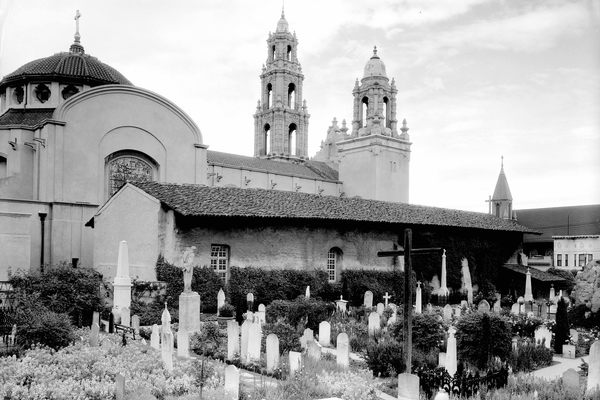The Cemetery Owned by No One: Philadelphia’s Abandoned Mount Moriah
Gate of Mount Moriah Cemetery in Philadelphia (all photographs by the author)
Philadelphia’s Mount Moriah Cemetery has been officially closed and abandoned since 2011, its 380 acres now overgrown, the over 85,000 graves consumed by an encroaching forest. Incorporated in 1855, it was once among the most elite of the Victorian cemeteries. Now you’re lucky if you can find a family member’s grave without rubbing against poison ivy.
How such a significant place fell into such ruin is complicated, and years after its last burial it’s still effectively without an owner. A nonprofit volunteer-spurred group called Friends of Mount Moriah Cemetery regularly cuts a path in the bramble so there is at least some navigation through the grounds. But as the cemetery is divided between Philadelphia and Delaware counties, each with its own potential managing corporation, as of this month Mount Moriah’s future is undecided by the two sides.
Mausoleum crumbling in the flora
Vines climbing up a statue
This past weekend Atlas Obscura visited the cemetery, drawn to the place by the recent entry posted to our site by Luke Spencer, whose photographs showed monuments swallowed by vegetation with a Victorian decay found more in Europe with places like Highgate Cemetery in London. There were vines winding up obelisks and pillars topped with statues of mourning women who seemed soon to be pulled down into the dense verdure. Graffiti on bricked-up mausoleums was buffed over in white. No one else was in the cemetery, and coming around one of the blind bends of high foliage we were startled to see a group of at least four deer bound away from us into the green labyrinth. While there were definitely some unnerving areas, such as a place where it seemed people had been coming at night to party, it overall was just incredibly sad. Here is a place meant as memorial, as a place of peace for the dead, and they’ve been left to obscurity and neglect. There is a definite beauty to nature overtaking the old marble and granite monuments, but this is not the burial choice that these people made. The sole exceptions are the mowed Civil War plots which are still cared for by the Department of Veterans Affairs.
Mount Moriah was once as prestigious a rural cemetery as its city sibling Laurel Hill, which still enjoys a preserved status as a historic space. Even Betsy Ross was once interred in Mount Moriah, until she was dug up and reburied in 1976 at the Betsy Ross House. What brought Mount Moriah down was not just a fall from fashion for the old grandiose monuments and Victorian-style death rituals, but a gradual deterioration of administration, until the last member of its cemetery association passed away in 2004. Now its most visible face is the old Romanesque entrance that is a fragmented vision of what it once was — a fractured, crumbling portal into a cemetery only peaking through the overgrowth.
The ruins of the gate
An Egyptian-style mausoleum with its door bricked up & graffiti covered with white paint
Vines on an obelisk & statue of Hope
Two bricked-up mausoleums
A shrouded urn covered with vines & honeysuckle
A 1930s tombstone among the plants
The bushes & grass grow to the middle of this tall monument
This statue of Time was once on the entrance gate before being purchased by this lot holder
The Civil War plots are the only ones regularly maintained
A group of mausoleums & obelisks are abandoned on a hill
Another view of the hill with the mausoleums & obelisks
A view over one of the more maintained areas of the cemetery
MOUNT MORIAH CEMETERY, Philadelphia, Pennsylvania
One of the most important things to us here at the Atlas is to always keep traveling and discovering. Notes from the Field are first person reports from the most inspiring trips taken by the Atlas Obscura Team. Read more Notes From the Field Here>



















Follow us on Twitter to get the latest on the world's hidden wonders.
Like us on Facebook to get the latest on the world's hidden wonders.
Follow us on Twitter Like us on Facebook